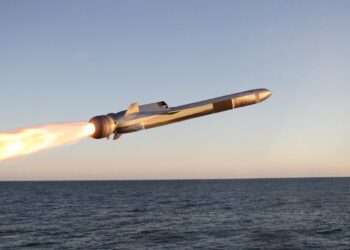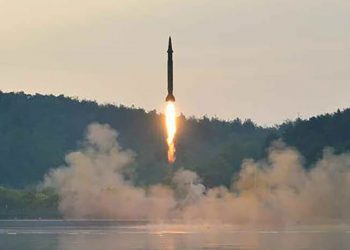WASHINGTON: Ballistic missile defense has come out of the world of the controversial and improbable and now is in the realm of the accepted and possible, Deputy Defense Secretary William J. Lynn III said today.
Lynn spoke to the 8th Annual U.S. Missile Defense Conference held at the Ronald Reagan Building here.
The deputy secretary charted the course of missile defense in the United States. He said officials recognized as soon as the Nazis launched V-2 missiles at Great Britain during World War II that a new threat had emerged, and something had to be done to combat it. But for years, he said, missile defense was viewed as technologically impossible and politically unpalatable.
“Fifty years of concerted investment by our scientific and military establishment was capped in this past decade by stunning technological progress in both sensor and systems integration,” Lynn said. “The result is a series of systems that provide demonstrable protection against a range of missile defense threats.”
The United States now has limited continental defense, and deployed U.S. forces have a shield against shorter-range missile threats. Lynn called missile defense a cornerstone to American defense.
But the threat continues to grow, Lynn said. “The most immediate threat is ballistic missiles from regional actors,” he said. “That threat is growing both quantitatively and qualitatively — systems that could someday be deployed against our forces are becoming more accurate and harder to defeat, while attaining greater ranges.”
The Defense Department completed its first Ballistic Missile Defense Review this past year and released its conclusions in early February. The review posited six priorities that shape the missile defense program. The first brick in the missile defense policy wall is that the United States will continue to defend the homeland against limited missile attack, he said.
“With current capabilities we can continue to defend the homeland against a limited attack, both now and in the foreseeable future,” Lynn said, adding that homeland defense is focused on Iran and North Korea and does not focus on Russia or China.
The United States will defend U.S. forces and allies from regional threats, Lynn said. The short-range missile threat has increased and while the United States has made significant progress, more needs to be done, he noted.
“To counter the regional threat … we need to devote further resources to missile defense capabilities,” Lynn said. “The safety of our deployed forces and allies depend upon this investment.”
The third fundamental is that before the United States deploys new capabilities, the systems must undergo thorough testing in realistic operational conditions.
Any system deployed must be fiscally sustainable, Lynn said. This means ensuring the United States can fund the system through the life of that system.
Any U.S. missile defense capability must be adaptable to changes, the deputy secretary said. Building capabilities that are mobile and modular ensures the United States can adapt as the threats evolve and the technology improves, he explained.
Finally, the United States will continue to work with international allies and partners, especially for building regional security architectures, he said.
“Missile defense is an important aspect of our regional partnerships,” Lynn said. “In some, our missile defense posture redirects missile defense resources to address near-term regional missile threats while also sustaining and enhancing our ability to defend the homeland against limited long-range attacks.”
Lynn noted that the missile defense program received real growth in the most-recent budget despite spending restraints President Barack Obama is imposing on government agencies. “We are fielding all these capabilities in an austere fiscal environment,” Lynn said.
“The president has announced a spending freeze in domestic agencies, yet for the second year in a row, he has increased the Department of Defense’s budget,” the deputy secretary said. “President Obama has made a strategic choice to continue funding modest growth in the military and other national security agencies.”









